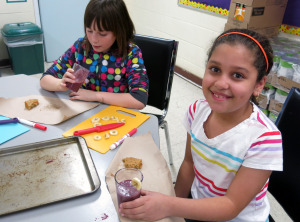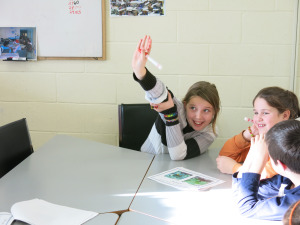Remember back in the day when McDonald’s would you give a free plastic toy when your parents bought you a Happy Meal. The toy was likely from the latest Disney cartoon, and you reaaally wanted it.
“All I have to do is eat a happy meal and I get it for free?!…I can do that!”, you thought.
I used to think affiliating food with kids cartoons was a tricky marketing ploy. Until i started planning the latest Good Food First club, and reading up on the latest marketing schemes. I was shocked to realize how the game has evolved.
In the age of social media, no longer is advertisement confined to billboards and Saturday flyers but kids are interacting with marketers; whether it be through “likes” on facebook or online video games, these new strategies are forming brand loyalties like never before.
As an example, lets consider the Happy Meal again. McDonald’s joined up with the popular movie Avatar and created an online game for kids to play. The catch: the code needed to log-on is found inside your happy meal. The more happy meals you buy, the more levels you can play. Not surprisingly, it worked. McDonald’s saw an 18% sales increase in their american sales.
When establishing brand loyalty it’s important to start early. In a little experiment we did in the Good Food First club, kids were given pictures of partially obscured symbols of fast food chains and asked to fill in the blanks. Most kids had no problem naming them off.
VS.
When shown coloured photos of food items like kale, a rhubarb plant or a garlic press, there were fewer raised hands.
Why would this be? The answers simple, as one kids put it “I see that M everywhere!!”. Presently, whether it’s online or walking down the street, we’re seeing a lot of branding for convenience foods and at the same time spending less time in the kitchen preparing food from scratch. This may explain the recognition difference between Kale and Cadbury.
Ploys like combining video games and fast food strikes me as seriously dangerous combination being like crack for kids.
It can be easy to sit back, and expect our kids to know that they should be eating healthy foods, and just knowing what those healthy foods are, and just being able to prepare or access those foods.
But when the majority of food messaging kids are exposed to is that of food marketers for sugary snacks and candy these expectations of just knowing better are unrealistic. We need to teach them.
The majority of foods ads targeted towards kids are for unhealthy foods. Snacks and Candy and sugared cereal.
Branding is powerful stuff, and some feel like it’s time to start fighting fire with fire. Or rather scoobie doo with elmo. One study found that having Elmo stickers on apples, increased the number of kids choosing an apple as part of their lunch.
We wanted to show kids some other quick ‘n’ easy and healthy snacks that they could whip up at home. We also challenged the different snack groups to invent a catchy advertisement to sell their snack to there classmates.
It was great. The kids got really into it. We heard raps selling “Perfect parsnip fries” and names like the “fruitveg-tastik” given to green smoothies.
To see more of our fun at the Good Food First club, take a look at this video put together by our Food Intern Joel Mansvelt.
Below is a recipe for green smoothies that believe it our not were a HIT with the kids!
BANANA BERRY GREENS SMOOTHIE
INGREDIENTS
- 2 cups of baby spinach (or Kale) leaves
- 1 banana
- 1 cups of pure or filtered water
- 1/2 cup milk or almond milk
- 2 cup of mixed frozen berries (blueberries, raspberries, strawberries)
- ½ cup yogurt
PREPARATION:
Add all to blender and BLEND!






